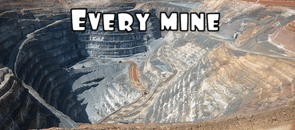Interesting Facts about Royalty of Minor Minerals in Kerala
- Ordinary earth was classified as a minor mineral when the KMMC Rules, 1967 were enacted. Later, it was removed from this classification in the year 1977. Later it was classified as minor mineral in the year 2012.
- For granite (building stone) and other minerals, royalties were specified per tonne as well as per cubic meter until March 31, 2023. From the royalty rate schedule, it is observed that the specific gravity of granite (building stone) was initially taken as 1.8 during earlier periods, later increased to 2, and then to 2.5.
- Starting from April 1, 2023, the royalties for all minor minerals (except Granite Dimension Stone) are specified per tonne.
- The royalty rates for all minor minerals remained the same for 17 years, from 1997 to 2015.
- The average annual increase of royalty is Rs. 1.22 per year.
- The percentage increase of royalty varied from 50% to 300% for granite (building stone).
The evolution of India’s mineral policy began with the Mineral Policy Conference held in 1947. This led to the enactment of the Mines and Minerals (Regulation and Development) Act, 1948, which was the first legal framework in independent India for regulating and developing mines. The adoption of the Constitution of India on January 26, 1950, which defined the legislative powers of the Union and State Governments, significantly impacted mineral policy.
The Seventh
Schedule of the Constitution, under Entry 54 of List I, empowered the Central
Government to regulate mining activities and the development of minerals, while
Entry 23 of List II granted the State Government powers subject to List I. This
framework resulted in the enactment of the Mines and Minerals (Regulation and
Development) Act, 1957. Consequently, State Governments were required to frame
rules for the regulation and development of minor minerals.
States such as
Tamil Nadu and Rajasthan enacted their minor mineral rules as early as 1959,
whereas Kerala introduced the Kerala Minor Mineral Concession Rules in 1967.
Kerala is
endowed with various minor minerals, including granite (building stone),
laterite (building stone), ordinary sand, ordinary clay, granite (dimension
stone), and ordinary earth. Historically, granite (building stone) has been the
major minor mineral extracted in the state. This paper will focus on the
revision of royalty rates concerning granite (building stone). Previously,
royalty rates were set based on both the weight (in tonnes) and the volume (in
cubic meters) of the mineral.
It is pertinent
to note that ordinary earth was included as a minor mineral under item number
2. Item number 3, building stones, included laterite as well as road metal,
metal for concrete, and all other minor minerals. Interestingly, road and
concrete metals were classified as minor minerals.
In 1973, item
number 1 of Schedule I was amended to incorporate different types of lime
shells such as white lime shell, black lime shell, drift lime shell or
seashell, and shell of oyster.
In 1977, the
ordinary earth was removed from the list of minor minerals and the term “granite”
was introduced under item number 3 of minor minerals.
In the year 1985,
the royalty rates were revised, and the rates were doubled as follows:
In 1989, the
royalty rates were again revised.
In addition, in
the year 1989, new two types of minor minerals were introduced namely, black
granite and other types of granites used for decorative and ornamental
purposes.
In the year 1992,
the royalty rates were again revised as follows:
The term
granite was changed and all rocks other than those used as dimension stone were
classified as a separate type of mineral. The term laterite remined same since
1967.
Next revision
took place in 1997 and only the rates were changed:
On 17.11.2012 the ordinary earth was included as minor mineral and the royalty of the same was fixed as follows:
On 7.2.2015,
the KMMC Rules 1967 was repealed and new KMMC Rules 2015 came into existence. In
the new KMMC Rules 2015, royalty schedule was modified. Since the previous royalty
revision took effect a month ago, there was no hike in royalties but the laterite
was renamed as laterite (building stone).
On 22.6.2017, four
new minerals were added to the Schedule I and the term “granite (building
stone)” was introduced instead of “All those group of rocks specified in
classification in sub-item (ii) of rule 18” the royalties were fixed as
follows:
Vide amendment
dated 31.3.2023, the royalties were again revised as follows:
From the above data
a graph has been plotted to depict the change in royalty of granite (building
stone) over years.
On statistical analysis the following results were obtained with respect to royalty hike of granite building stone:
1. 1. Average
Annual Increase: 1.22 Rs per year
2. Percentage Increase from one period to the next:
Date Royalty per tonne Percentage Increase
1967-11-24 0.5 -
1985-02-01 1.0 100.0
1989-01-24 2.0 100.0
1992-06-03 8.0 300.0
1997-04-01 16.0 100.0
2015-01-05 24.0 50.0
2023-04-01 48.0 100.0
Trend analysis
Download all royalty revision notifications from 1967 to 2024
Download royalty revision Government Order dated 19-12-2024 pertaining to laterite building stone




























0 Comments